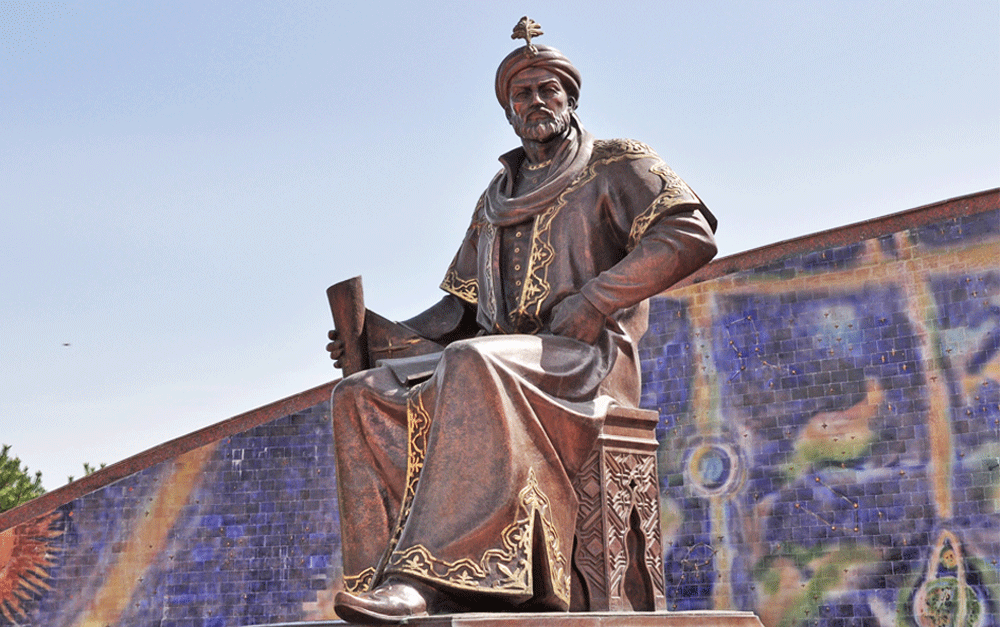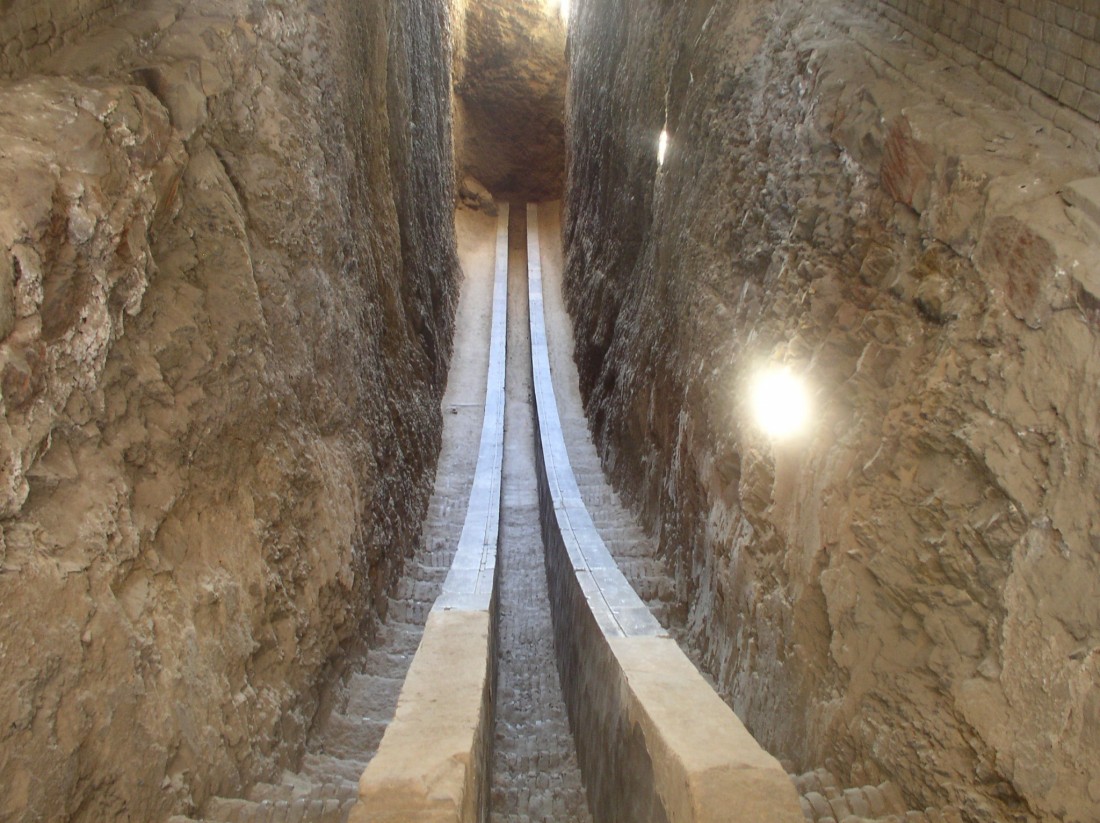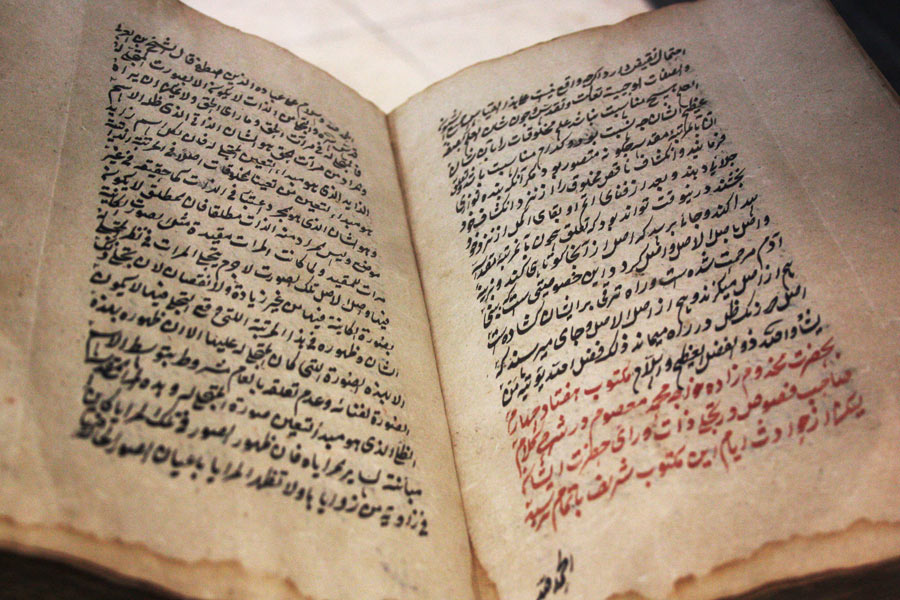Through the thorns to the Stars. Ulugbek Observatory
Could the great scientist of the XV century, the grandson of Tamerlane, Ulugbek (1394 - 1449) have predicted that his numerous works and research would have a significant impact on the development of world science in many centuries? The achievements of Ulugbek's astronomical school had a huge impact on the development of exact sciences in the West and East, India and China.

In 1428-1429, one of the world's most significant observatories of the Middle ages was built near Samarkand, Ulugbek. According to the scheme, the Observatory was a round three-story building with a diameter of 46.4 m and a height of at least 30 m.it contained a marble quadrant. Major astronomers, students of Ulugbek, Ali-Kushchi and Kazi-zade ar-Rumi worked at the Ulugbek Observatory.
Among the numerous astronomical studies of Ulugbek conducted at this Observatory, of great interest is the priceless work Gurgan Zij – a famous Catalog of the Stars, consisting of a description of 1018 stars. The length of the star year was determined by Ulugbek to be 365 days, 6 hours, 10 minutes, and 8 seconds. Surprisingly, the observations of Samarkand astronomers were conducted without optical instruments, but only with the naked eye. According to research by scientists, the Observatory had other instruments that, unfortunately, have not been preserved.
The first in the history of astronomy catalog of stars was made by the great astronomer of antiquity Hipparchus, who lived in the II century BC. the Catalog of this scientist contains the coordinates of about a thousand stars; it is placed in the work of the famous ancient Greek scientist Ptolemy "Almagest"(the full name of this treatise" Great mathematical construction of astronomy in 13 books"), dated about 140 ad.
The work carried out at the Ulugbek Observatory is the first complete re – observation of stars from the Hipparchus–Ptolemy catalog 16 centuries after its creation. The Ulugbek catalog contains almost exactly the same stars as the Ptolemaic one, but the coordinates are given with higher accuracy. In fact, Ulugbek became the second (after Hipparchus) astronomer who compiled a fundamental (based on his own observations) catalog of stars.
To create a catalog of stars, you need to make a huge effort, you need to work diligently and hard for many years. Star catalogues are very valuable for science. They give an idea of the distribution of stars in the sky in different epochs. They are also material for studying the movements of celestial bodies.

The Ulugbek star catalog became known to European astronomers after its publication in 1648 — where the main work performed at the Ulugbek Observatory in Samarkand was partially published for the first time. The work was prepared for publication and commented on by John Greaves (1602-1652), professor of astronomy at the University of Oxford. Later, the fragments of the catalogue was published in England a number of times.
In the "Catalog of the starry sky", published by the Polish astronomer Jan Hevelij, there is a unique engraving depicting a symbolic collection of the world's greatest astronomers who lived in different countries at different times. They are seated at a table, flanked by Urania, the Muse of astronomy. Ulugbek is also depicted among them.
17 years after the first Oxford publication, the learned curator of the Bodleian library in Oxford, English orientalist and translator Thomas Hyde (1636-1703) prepared and printed in Persian and Latin a new edition of the Samarkand catalog called "Tabulae Long, AC Lat. Stellarum Fixarum, ex observatione Ulugh Beighi», Oxonii, 1665.
German astronomer and lunar mapmaker Johann Heinrich von Medler named the lunar crater Ulugbek in honor of Ulugbek, mapped on his 1830 lunar map.
The most detailed analysis of the Ulugbek star catalog, based on the study of 8 manuscripts stored in libraries in Great Britain, was published in the United States in 1917 by E. B. Knoblem under the title " Ulugh Beg's Catalog of Stars. Revised from all Persian Manuscripts Existing in Great Britain».
The main instrument of the Samarkand Observatory is a marble wall quadrant with an arc radius of 40.2 m and an arc length of 63 m.
Most of this huge angle-measuring instrument is located underground, under the floor of the Observatory - to a depth of more than 10 meters. The second half of the quadrant rose 28 meters above the ground and most likely rested on a rectangular tower, which has not survived to this day.
Set in the direction from South to North, that is, in the plane of the Meridian, this quadrant was used to determine the heights of the Sun, moon, and planets above the horizon at the time of their passage through the celestial Meridian, as well as to measure the angular distance between the luminaries and to observe bright stars.
The large size of the scale made it possible to make observations with very high accuracy, in particular, it was possible to determine the coordinates of the Sun with an error of only 1 angular second. The minutes and seconds of the arc were counted on an auxiliary scale. Along the marble barriers were built brick stairs leading to the depth of the hill.
Time was merciless in relation to the unique monument of science. The Ulugbek Observatory was gradually destroyed and at the end of the XVII century was dismantled into bricks.
In 1908 and 1914, during excavations in the Samarkand region under the leadership of the Russian and Samarkand scientist V. L. Vyatkin, the location of the Observatory and part of the main instrument were discovered. But these excavations did not give the expected results. The find turned out to be only a remnant of the outer wall of a huge three-story building.
The research of the Observatory was successfully continued by academician M. E. Masson in 1941, and V. A. Shishkin in 1948.
Map
Online tour
Leave a comment
By logging in, you agree to the processing personal data
See also
Workhours: 9:00-18:00, Mn-Fr
For any questions
Uzbekistan


 UZB
UZB RUS
RUS JPN
JPN ARA
ARA FRA
FRA CN
CN DE
DE POR
POR ESP
ESP TUR
TUR ITA
ITA HIN
HIN MAL
MAL
A comment